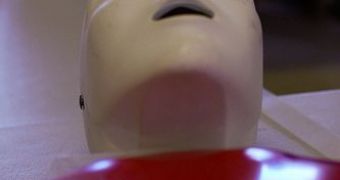A new study carried out by the University of Michigan Health System suggests that chest compressions before defibrillation in sudden cardiac arrest cases is just as effective as immediate use of an electrical defibrillator.
Because not many people having a cardiac arrest outside the hospital survive, U-M physicians thought they would examine which strategy is better, chest compression first or defibrillation first.
This review was based on data from 1,503 patients who underwent at least 90 seconds of chest compressions from emergency medical service providers, before electrical defibrillation.
After comparing patient survival rates, scientists concluded that “the compressions-first approach appears to be as good as the defibrillation-first approach, especially if there are delays to EMS arriving on-scene.”
Senior author Comilla Sasson, MD, an emergency medicine physician researcher at the University of Colorado says that the “study shows that chest compressions matter so even more emphasis should be placed on doing high-quality chest compressions both by laypeople providing bystander CPR and EMS providers.”
Lead study author Pascal Meier, MD, an interventional cardiologist at the U-M Cardiovascular Center says that both treatments are equivalent, and “current evidence does not support the notion that chest compressions first prior to defibrillation improves the outcome of patients in out-of-hospital cardiac arrest.”
The conclusion of the study is that if emergency response times are longer than five minutes it is best to start chest compressions before defibrillation.
Cardiac arrests are very serious and survival rates are very low if the event happens outside of a hospital, so when chest compressions along with CPR are administered very quickly, lives can be saved.
The American Health Association encourages bystanders to immediately begin CPR using chest compressions before any professional help arrives.
Also, when CPR is delivered by EMS professionals, it is usually a combination of rescue breathing and chest compressions, because this allows the circulation of the oxygen-rich blood, until the heartbeat is restored.
EMS providers perform CPR on at least 300,000 people with cardiac arrest every year in the United States, and statistics show that only 8% of people having sudden cardiac arrest outside of a hospital survive, so US citizens should be better informed and trained, so that they are able to help save a life.
In weeks to come, the AHA will launch the 2010 guidelines for CPR, e! Science News reports.

 14 DAY TRIAL //
14 DAY TRIAL //